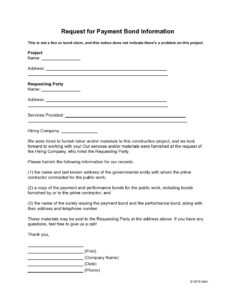Utilizing a predefined structure streamlines the process, reducing ambiguity and potential delays. This efficiency benefits both the requesting party and the union, promoting transparency and facilitating timely access to crucial information. Clear communication channels fostered by these forms can empower members, improve internal processes, and contribute to a stronger organization overall.
The following sections will explore the various components of these valuable tools, offering practical guidance on their creation and utilization within the context of organized labor.
Key Components of a Union Information Request Form
Effective data retrieval relies on well-structured requests. Several key components ensure clarity and completeness.
1: Requester Identification: Clear identification of the requesting party, including name, membership number, and contact information, ensures efficient handling and facilitates direct communication.
2: Date of Request: Recording the request date establishes a timeline for processing and follow-up.
3: Specific Information Sought: Precisely detailing the required information, including relevant dates, names, or document titles, minimizes ambiguity and ensures the retrieval of the correct data.
4: Purpose of Request: Stating the reason for the request provides context and assists the union in prioritizing and fulfilling the request appropriately.
5: Preferred Format: Specifying the desired format for the information (e.g., electronic copy, printed document) facilitates efficient delivery and usability.
6: Authorization (if applicable): For sensitive information, including authorization or release forms ensures compliance with privacy regulations and safeguards member data.
7: Signature Line: A designated space for the requester’s signature validates the request and provides a record of consent.
These elements contribute to a standardized process, enhancing transparency and facilitating effective communication within the organization.
How to Create a Union Information Request Template
Developing a standardized template ensures consistent and efficient information retrieval within a labor organization. A well-designed template clarifies expectations and facilitates the process for both requesters and union staff.
1: Define Scope and Purpose: Determine the types of information commonly requested and the intended users of the template. This establishes the foundation for a relevant and user-friendly form.
2: Gather Input from Stakeholders: Consulting union members, staff, and legal counsel ensures the template addresses diverse needs and adheres to relevant regulations.
3: Design a Clear and Concise Layout: Organize the form logically, utilizing clear headings, concise labels, and sufficient space for responses. A visually appealing format enhances usability.
4: Incorporate Essential Fields: Include fields for requester identification, date, specific information sought, purpose of the request, preferred format, and authorization (if necessary). Each field contributes to a complete and actionable request.
5: Ensure Accessibility: Provide the template in accessible formats (e.g., large print, electronic versions) to accommodate diverse needs and ensure inclusivity.
6: Review and Refine: Before implementation, thorough review by legal counsel and relevant stakeholders ensures compliance and practicality. Pilot testing can identify areas for improvement.
7: Communicate and Distribute: Inform members and staff about the new template, providing clear instructions on its use and access. Make the template readily available through various channels (e.g., website, email, printed copies).
A standardized approach to information requests promotes transparency and efficiency. A well-crafted template, informed by stakeholder input and legal review, equips individuals with the tools needed to access relevant information while streamlining internal processes for the benefit of the entire organization.
Standardized forms for requesting information from labor organizations provide a crucial framework for transparency and efficient communication. These templates, encompassing key elements such as clear identification of the requester and precise articulation of the data sought, streamline the retrieval process. Careful design, incorporating input from stakeholders and adhering to legal standards, ensures these tools remain effective and accessible.
Facilitating access to information empowers members and strengthens the overall organization. Implementation of robust request procedures contributes to a more informed and engaged membership, fostering trust and promoting a culture of open communication within the labor organization. Regular review and adaptation of these processes ensure continued effectiveness in meeting evolving needs.


